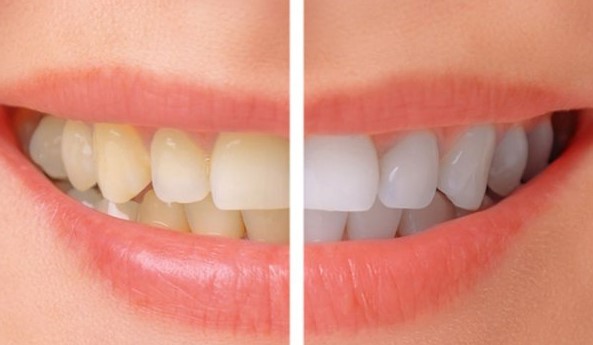Having slightly yellowish teeth is a common and natural occurrence for many individuals. Despite maintaining good oral hygiene practices, factors such as genetics, aging, and dietary choices can contribute to a mild discoloration of the teeth. It’s important to recognize that this subtle change in tooth color is typically normal and doesn’t necessarily indicate poor dental health.

The human body is a remarkable canvas of colors and shades, each hue offering insight into one’s health, lifestyle, and even personality. Among these, the color of teeth is a subject that not only speaks to dental health but also reflects various aspects of an individual’s life. Teeth, often considered mere tools for chewing, carry far more significance than one might imagine. The natural shades of teeth, including yellowish tones, can reveal a wealth of information about a person’s well-being, habits, and even age.
The Spectrum of Tooth Color
Before delving into the nuances of yellowish tones, it’s essential to understand the spectrum of tooth color. Teeth come in a range of shades, from pearly whites to more subdued tones like off-white, beige, and even slightly yellow. The color variations arise due to the composition of teeth, which consists of a hard outer layer called enamel and a slightly softer inner layer called dentin. The thickness and translucency of these layers, along with factors like genetics and aging, contribute to the overall color of teeth.
Yellowish Tones: The Unveiling of Lifestyle and Habits
While bright white teeth have often been portrayed as the epitome of dental health and beauty, the reality is that tooth color is not a one-size-fits-all criterion. Yellowish tones in teeth, when they fall within a certain range, can be perfectly natural and healthy. In fact, they can indicate a lifestyle and habits that are congruent with overall well-being.
One of the primary contributors to yellowish tones in teeth is diet. Consumption of deeply pigmented foods like berries, tea, coffee, and red wine can lead to staining over time, causing teeth to take on a yellowish hue. Additionally, the use of tobacco products is known to result in yellowing of teeth. For those who indulge in these habits, the presence of yellowish tones may indicate a need for moderation or, ideally, cessation.
Moreover, some people naturally have teeth that lean towards a slightly yellowish shade due to their genetics and the inherent color of their dentin. These individuals might have healthy teeth and gums but still possess teeth with yellowish undertones. This highlights the importance of recognizing that tooth color is not a definitive measure of dental health.
Aging and Yellowing: A Natural Progression
As time marches on, the vibrancy of youth gives way to the subtlety of age, and teeth are no exception to this process. Over the years, the enamel layer of teeth wears down, revealing more of the dentin beneath. Dentin, being naturally yellowish, imparts a warmer tint to aging teeth. Thus, the gradual yellowing of teeth is a natural phenomenon that accompanies the passage of time.
In this context, yellowish teeth can signify wisdom and experience. They embody a life well-lived, marked by years of smiles, laughter, and shared experiences. Embracing the natural yellowing of teeth as a testament to the journey of life is an empowering perspective that challenges the conventional notions of beauty.
The Psychological Impact of Tooth Color
Beyond the realm of physical health, tooth color can have a significant psychological impact on an individual’s self-esteem and confidence. Society’s emphasis on perfectly white teeth has led many to seek various teeth-whitening procedures and products, often driven by the desire to conform to societal beauty standards. However, this pursuit can sometimes lead to unrealistic expectations and unnecessary anxiety.
Promoting the understanding that yellowish tones can be natural and healthy helps dismantle these unrealistic ideals. Encouraging people to embrace their natural tooth color fosters a more inclusive notion of beauty, allowing individuals to feel confident in their uniqueness rather than striving for an unattainable norm.
The Role of Dentistry
Dentistry, as a field dedicated to oral health and aesthetics, plays a vital role in helping individuals achieve and maintain a healthy smile. When yellowish tones in teeth are a result of lifestyle factors or genetic predisposition, dental professionals can guide patients in making informed decisions. This might include recommendations for minimizing staining foods, quitting tobacco use, or providing teeth-whitening options that are safe and effective.
Importantly, dentists also play a role in educating patients about the natural spectrum of tooth color. By discussing the causes and implications of yellowish tones, dentists can empower individuals to make choices that align with their oral health goals while embracing the uniqueness of their natural tooth color.
In Conclusion
The natural shades of teeth, including yellowish tones, are a testament to the intricate interplay of genetics, lifestyle, and aging. These hues offer a glimpse into an individual’s life, reflecting habits, experiences, and the passage of time. Understanding that yellowish teeth can be a natural occurrence and not necessarily an indicator of poor oral health challenges conventional beauty standards and promotes a more inclusive perception of dental aesthetics.
Embracing the warmth of yellowish teeth as a reflection of wisdom and life experiences can reshape societal attitudes and promote self-acceptance. Dentistry, in collaboration with open conversations about tooth color, has the power to elevate oral health discussions beyond aesthetics, fostering a deeper understanding of the human body’s nuanced expressions. Ultimately, the journey towards a healthier, happier smile begins with acknowledging and celebrating the diverse spectrum of natural tooth shades.